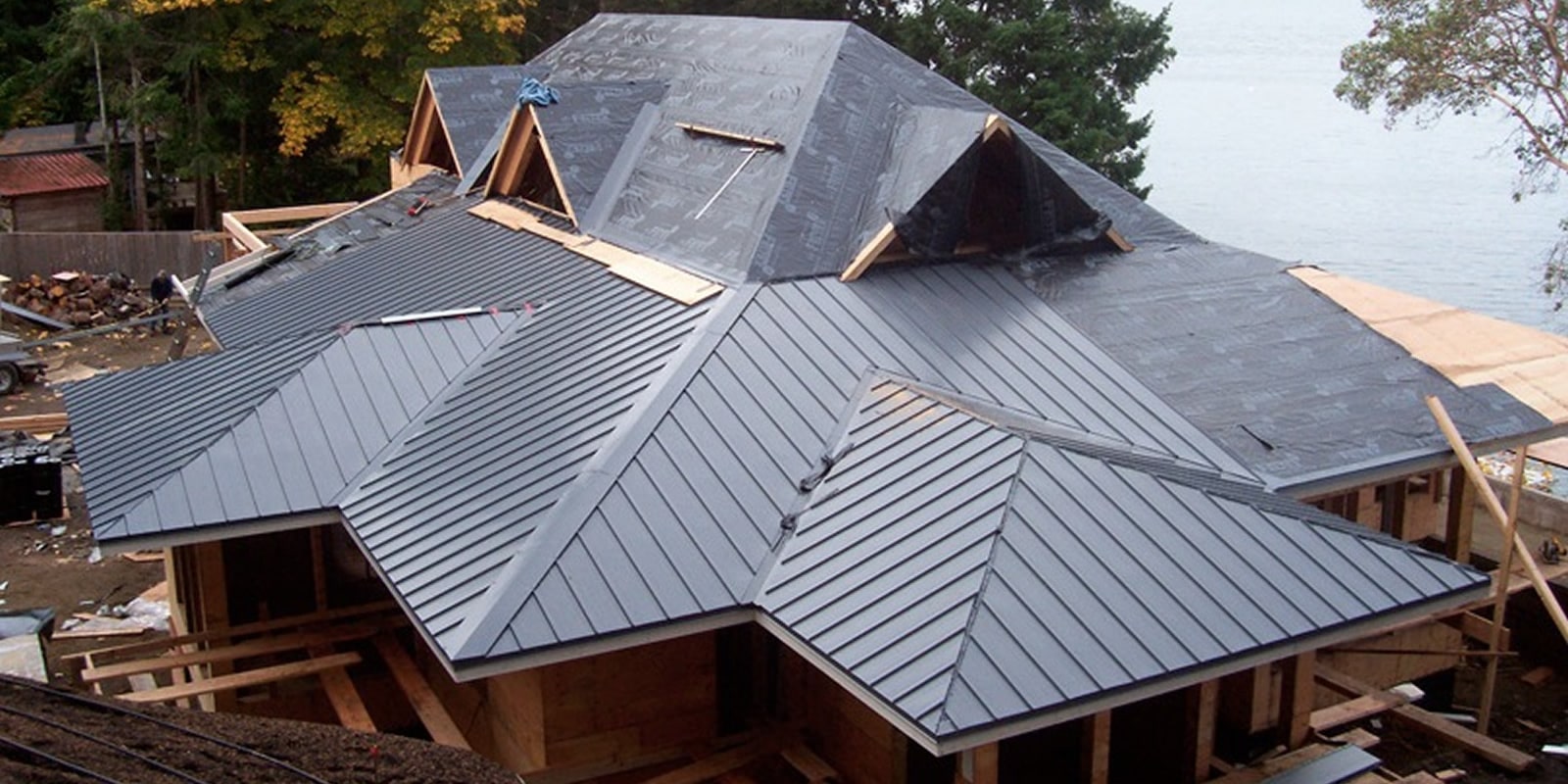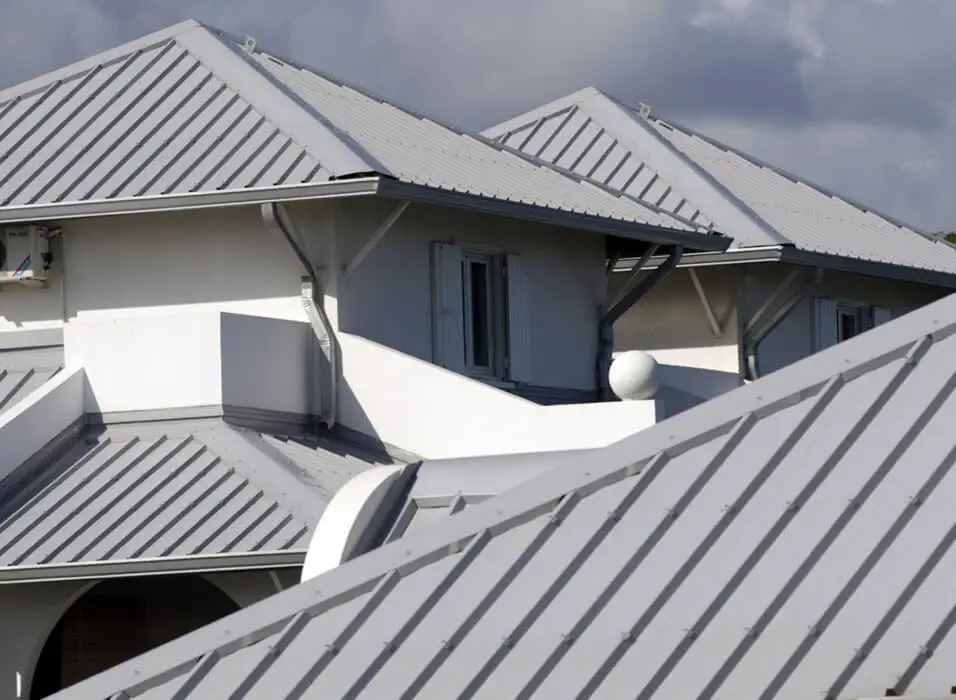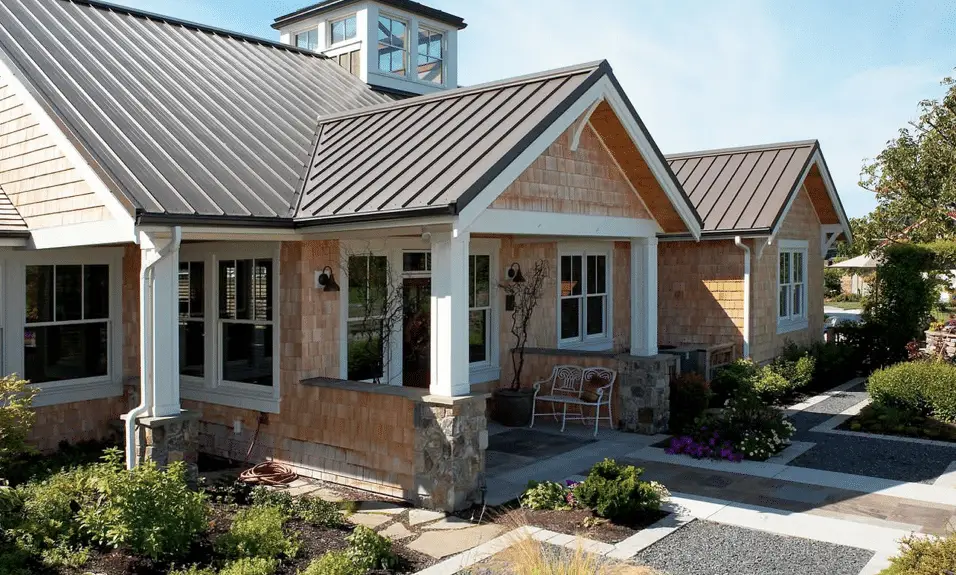How Do You Remove Oxidation From A Metal Roof
Introduction
How Do You Remove Oxidation From A Metal Roof: Oxidation is a common problem that many metal roof owners face. If left untreated, oxidation can lead to leaks and other costly damages. Removing oxidation from a metal roof requires a systematic approach and the use of appropriate tools and techniques. One of the first steps in removing oxidation from a metal roof is to thoroughly clean the surface. This can be done using a mild detergent or a specialized metal roof cleaner. It is important to avoid using abrasive materials or harsh chemicals that can further damage the roof. Gently scrubbing the surface with a soft-bristle brush or a sponge can help remove dirt, debris, and loose rust particles.
After cleaning the roof, the next step is to treat the oxidation. One common approach is to use a rust converter or a metal primer specifically designed for metal roofs. These products work by chemically converting the rust into a stable compound, preventing further corrosion and providing a protective layer.
Once the oxidation has been treated, it is important to apply a suitable coating or sealant to the metal roof. This helps to further protect the surface from future oxidation and extends its lifespan. It is recommended to consult with a professional or follow the manufacturer’s instructions to ensure proper application. Removing oxidation from a metal roof is a crucial step in maintaining its appearance and structural integrity.
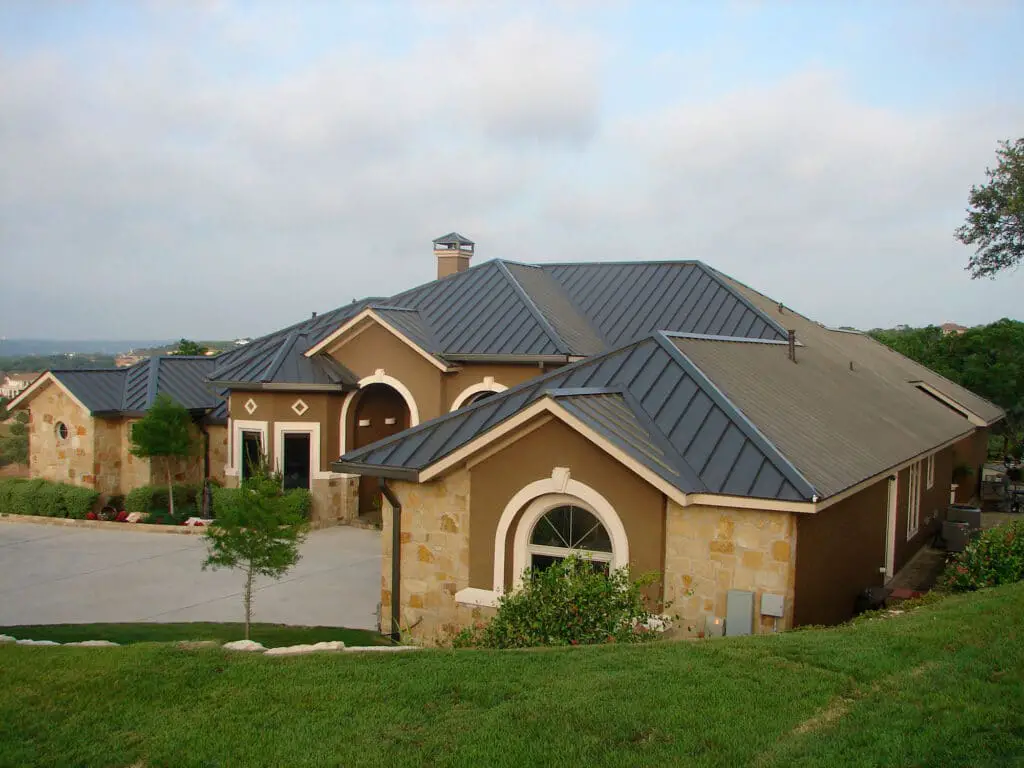
How do you remove black and oxidation from metal roofing?
Metal roofing is a popular choice for many homeowners due to its durability and longevity.
Methods for Removing Black Stains:
One common cause of black stains on metal roofing is the growth of algae or moss. To remove these stains, start by mixing a solution of equal parts water and bleach. Apply this solution to the affected areas using a soft-bristle brush or a low-pressure sprayer. Allow the solution to sit for about 15 minutes, then rinse it off with clean water. Repeat the process if necessary, and ensure proper ventilation during the cleaning process to avoid inhaling bleach fumes.
Methods for Removing Oxidation:
Oxidation occurs when metal roofing is exposed to oxygen and moisture over time, resulting in a dull and discolored appearance. To remove oxidation, start by cleaning the roof’s surface using a mild detergent and water solution. Gently scrub the affected areas with a soft-bristle brush or a non-abrasive sponge. Rinse the roof thoroughly with clean water to remove any residue. Once the roof is dry, apply a metal roof cleaner or a specialized oxidation remover, following the manufacturer’s instructions. Allow the product to sit for the recommended time, then rinse it off with water. This process will help restore the metal roof’s original shine and protect it from further oxidation.
Preventive Measures:
To prevent the recurrence of black stains and oxidation on metal roofing, it is essential to take preventive measures. Regularly inspect the roof for any signs of algae, moss, or debris accumulation, and promptly remove them.
How do you clean a chalky metal roof?
Removing Rust Stains on Metal Roofing
- Remove the particles or pieces that are causing the rust stains.
- Use a mild abrasive cleaner (soft scrub) applied to a non-abrasive pad.
- Use light pressure to work at the stain until it is gone.
- Rinse thoroughly.
A chalky metal roof can be a common problem for homeowners, as it not only affects the appearance of the roof but can also lead to deterioration and reduced lifespan of the metal. Cleaning a chalky metal roof is essential to maintain its integrity and prolong its durability. In this article, we will discuss effective methods and techniques to clean a chalky metal roof, ensuring its longevity and aesthetic appeal.
Understanding the Problem:
Before diving into the cleaning process, it is important to understand why a metal roof becomes chalky. Over time, exposure to various environmental factors such as sunlight, rain, and pollutants can cause the protective coating on the metal to degrade. This degradation leads to the formation of a chalky residue on the surface of the roof. This residue not only affects the visual appeal of the roof but can also trap moisture, leading to corrosion and further damage.
Preparation:
Prior to cleaning the chalky metal roof, it is crucial to gather the necessary tools and materials. You will need a ladder, safety harness, soft-bristle brush or broom, garden hose with a spray nozzle, mild detergent or roof cleaner, and protective gear such as gloves and goggles. It is important to ensure your safety while working at heights, so make sure to follow all necessary precautions.
Cleaning Process:
Start by removing any loose debris or leaves from the roof using a soft-bristle brush or broom. This will prevent scratching the surface during the cleaning process. Once the loose debris is cleared, wet the roof surface using a garden hose with a spray nozzle. This will help loosen the chalky residue and make it easier to clean.
Cleaning a chalky metal roof is a crucial maintenance task that should not be overlooked. By following the proper cleaning process and using the right tools and materials, you can effectively remove the chalky residue and restore the appearance and longevity of your metal roof. Regular cleaning and maintenance will not only enhance the aesthetic appeal of your home but also protect your investment in the long run.
What is the best cleaning solution for a metal roof?
A metal roof is a durable and long-lasting option for homeowners. However, like any other roofing material, it requires regular maintenance to ensure its longevity and appearance. One crucial aspect of metal roof maintenance is cleaning. Regular cleaning not only enhances the roof’s aesthetic appeal but also prevents the buildup of dirt, debris, and potential damage. To achieve the best cleaning results, it is essential to choose the right cleaning solution for a metal roof.
Factors to consider:
When selecting a cleaning solution for a metal roof, several factors need to be taken into account. Firstly, it is crucial to consider the type of metal used in the roof’s construction. Different metals may react differently to certain cleaning agents, so it is important to choose a solution that is compatible with the specific metal. Additionally, the severity of the dirt and stains on the roof should also be considered. Mild cleaning solutions may be sufficient for regular maintenance, while more stubborn stains may require stronger solutions.
Recommended cleaning solutions:
One of the most commonly recommended cleaning solutions for metal roofs is a mixture of mild detergent and water. This solution is gentle enough to prevent damage to the metal surface while effectively removing dirt and grime. It is important to avoid using abrasive cleaners or harsh chemicals, as they can cause corrosion or discoloration of the metal.
Another effective cleaning solution for metal roofs is a mixture of vinegar and water. Vinegar is a natural and environmentally friendly option that can effectively remove stains and inhibit the growth of mold and mildew. It is important to dilute the vinegar with water to prevent any potential damage to the metal surface.
Choosing the best cleaning solution for a metal roof is crucial for its maintenance and longevity. Factors such as the type of metal and the severity of dirt should be considered when selecting a cleaning solution. Mild detergent and water or a mixture of vinegar and water are recommended options that effectively clean the metal roof without causing damage. Regular cleaning using the appropriate solution will help maintain the roof’s appearance and prevent potential issues in the long run.
Can you fix oxidized metal?
Vinegar and Baking Soda: Mix equal parts of white vinegar and baking soda to create a paste. Apply the paste onto the oxidized metal and let it sit for a few hours. Scrub the metal gently with a soft-bristled brush, then rinse with water. Lemon Juice and Salt: Cut a lemon in half and sprinkle salt onto the cut surface.
Oxidized metal refers to metal that has undergone a chemical reaction with oxygen, resulting in the formation of a layer of metal oxide on its surface. This process is commonly known as rusting and can occur in various metals, including iron, steel, aluminum, and copper. Oxidation not only affects the appearance of metal but also weakens its structural integrity over time. However, there are several methods available to fix oxidized metal and restore its original condition.
One of the most common ways to fix oxidized metal is through mechanical methods. This involves removing the layer of metal oxide using abrasive tools such as sandpaper, wire brushes, or steel wool. By scrubbing the surface of the metal, the oxidized layer can be gradually eliminated, revealing the underlying metal. It is important to note that this method may require some effort and time, especially for heavily rusted or large metal surfaces. Additionally, protective gear such as gloves and goggles should be worn to ensure safety during the process.
Chemical methods can also be employed to fix oxidized metal.
These methods involve using specific chemicals that react with the metal oxide, converting it into a soluble compound that can be easily removed. One commonly used chemical for this purpose is phosphoric acid. When applied to the oxidized metal surface, phosphoric acid reacts with the metal oxide, forming a water-soluble compound that can be washed away. This method is particularly effective for small or intricate metal objects that are difficult to clean using mechanical methods alone.
Another approach to fixing oxidized metal is through the use of protective coatings. Applying a layer of protective coating, such as paint or varnish, can prevent further oxidation by creating a barrier between the metal and oxygen in the environment. Before applying the coating, it is essential to clean the metal surface thoroughly to ensure proper adhesion. Additionally, choosing a coating that is specifically designed for metal surfaces and provides corrosion resistance is crucial for long-term protection.
What chemicals clean metal roofs?
For the best chemicals to clean a metal roof, stick to gentle detergents such as dish soap, laundry detergent, or car-wash soap mixed in a diluted solution of ¼ cup of soap to 1 gallon of water. These mild cleansers are safe for most roof finishes but are still strong enough to remove remaining dirt particles.
Metal roofs are a popular choice for many homeowners due to their durability and longevity. However, over time, these roofs can accumulate dirt, debris, and even rust, which can affect their appearance and performance. To maintain the pristine condition of metal roofs, it is essential to clean them regularly using appropriate chemicals. In this article, we will explore some of the most effective chemicals for cleaning metal roofs and discuss their benefits and usage.
Chemical Cleaners for Metal Roofs:
Vinegar: Vinegar is a versatile and eco-friendly cleaning agent that can effectively remove dirt, grime, and stains from metal roofs. Its acidic nature helps dissolve mineral deposits and rust, leaving the roof surface clean and shiny. To use vinegar as a cleaner, mix equal parts of vinegar and water in a spray bottle and apply it to the roof. Allow it to sit for a few minutes before scrubbing with a soft brush or cloth. Rinse thoroughly with water to remove any residue.
Trisodium Phosphate (TSP): TSP is a powerful cleaner commonly used for heavy-duty cleaning tasks. It is particularly effective in removing tough stains, grease, and mildew from metal roofs. However, TSP is a strong chemical and should be handled with care. Before using TSP, make sure to wear protective gloves and goggles. Mix TSP with water according to the manufacturer’s instructions and apply it to the roof using a brush or sprayer. Allow it to sit for a few minutes, then scrub the surface gently. Rinse thoroughly with water to remove any residue.
Benefits of Chemical Cleaning:
Regular chemical cleaning of metal roofs offers several benefits:
Enhanced Aesthetics: By removing dirt, stains, and rust, chemical cleaning restores the original appearance of metal roofs, making them look clean and well-maintained.
Extended Lifespan: Cleaning metal roofs helps prevent the accumulation of debris and moisture, which can lead to corrosion and premature deterioration. By removing these elements, chemical cleaning helps extend the lifespan of the roof.
Improved Performance: A clean metal roof allows for better water runoff, reducing the risk of leaks and water damage. It also helps maintain the roof’s reflective properties, enhancing energy efficiency by reducing heat absorption.
Regular cleaning of metal roofs is crucial for maintaining their appearance and performance. Vinegar and TSP are two effective chemical cleaners that can remove dirt, stains, and rust from metal roofs. However, it is important to follow safety precautions and manufacturer’s instructions when using these chemicals. By incorporating chemical cleaning into your roof maintenance routine, you can ensure that your metal roof remains in optimal condition for years to come.
What are the potential consequences of leaving oxidation untreated on a metal roof?
Oxidation on a metal roof occurs when the metal is exposed to oxygen and moisture over time. If left untreated, oxidation can have several detrimental consequences for the roof and the overall structure of the building.
Firstly, untreated oxidation can lead to the formation of rust on the metal roof. Rust weakens the structural integrity of the roof, making it more susceptible to leaks and damage. Over time, these leaks can result in water infiltration, leading to further deterioration of the roof and potential damage to the interior of the building.
Secondly, oxidation can cause the metal roof to lose its aesthetic appeal. As the oxidation progresses, the roof may develop unsightly discoloration and stains, detracting from the overall appearance of the building. This can be particularly problematic for commercial buildings, as a poorly maintained roof can create a negative impression on potential customers or clients.
Lastly, leaving oxidation untreated can significantly reduce the lifespan of the metal roof. Oxidation weakens the metal, making it more prone to corrosion and other forms of damage. This can result in the need for costly repairs or even premature replacement of the entire roof, which can be a significant financial burden for property owners.
Therefore, it is crucial to address oxidation on a metal roof promptly to prevent these potential consequences. Regular inspections and timely treatment can help maintain the structural integrity, appearance, and longevity of the roof, ensuring the overall protection and value of the building.
What are some effective methods or products for removing oxidation from a metal roof?
When it comes to removing oxidation from a metal roof, there are several effective methods and products available. One commonly used method is pressure washing, which involves using a high-pressure water spray to remove the oxidized layer from the surface of the roof. This can be done using a pressure washer with an appropriate nozzle and pressure setting. It is important to be cautious while pressure washing to avoid damaging the roof or causing water intrusion into the building.
Another method for removing oxidation is chemical treatment. There are various commercial products specifically designed for removing oxidation from metal roofs. These products typically contain chemicals that react with the oxidized layer, breaking it down and making it easier to remove. It is important to carefully follow the manufacturer’s instructions when using these products and to take appropriate safety precautions, such as wearing protective gloves and eyewear.
In some cases, manual scraping or sanding may be necessary to remove stubborn oxidation. This method involves physically scraping or sanding the oxidized layer off the metal surface. It is important to use appropriate tools and techniques to avoid damaging the roof or causing injury. Protective equipment, such as gloves and goggles, should be worn to ensure safety during this process.
Are there any specific safety precautions or equipment required when removing oxidation from a metal roof?
When it comes to removing oxidation from a metal roof, it is crucial to prioritize safety and take necessary precautions. These safety gears will shield you from potential eye injuries, respiratory issues, and skin irritations. Additionally, it is important to use sturdy and stable ladders or scaffolding to access the metal roof safely.
Furthermore, it is advisable to work in pairs or have someone nearby who can assist you or provide help in case of an emergency. This ensures that you have immediate assistance if needed and can enhance overall safety during the oxidation removal process.
Removing oxidation from a metal roof requires specific safety precautions and equipment to minimize the risk of accidents or injuries. Wearing appropriate safety gear, using stable ladders or scaffolding, and having a partner nearby are all important measures to ensure a safe and successful oxidation removal process.
How frequently should a metal roof be inspected and treated for oxidation to prevent further damage?
Regular inspection and treatment of a metal roof is crucial to prevent further damage caused by oxidation. The frequency of inspection and treatment depends on various factors such as the climate, environmental conditions, and the age of the roof. However, as a general guideline, it is recommended to inspect and treat a metal roof for oxidation at least once every 1-2 years.
Oxidation occurs when the metal roof is exposed to oxygen and moisture over time, leading to the formation of rust and corrosion. If left untreated, oxidation can cause significant damage to the roof, compromising its structural integrity and reducing its lifespan. It can result in leaks, weakened panels, and even complete roof failure in severe cases.
To prevent further damage, it is essential to regularly inspect the metal roof for signs of oxidation. This includes checking for rust spots, discoloration, peeling paint, or any other visible signs of corrosion. Additionally, it is important to inspect the roof after severe weather events such as storms or heavy rainfall, as these can accelerate the oxidation process.
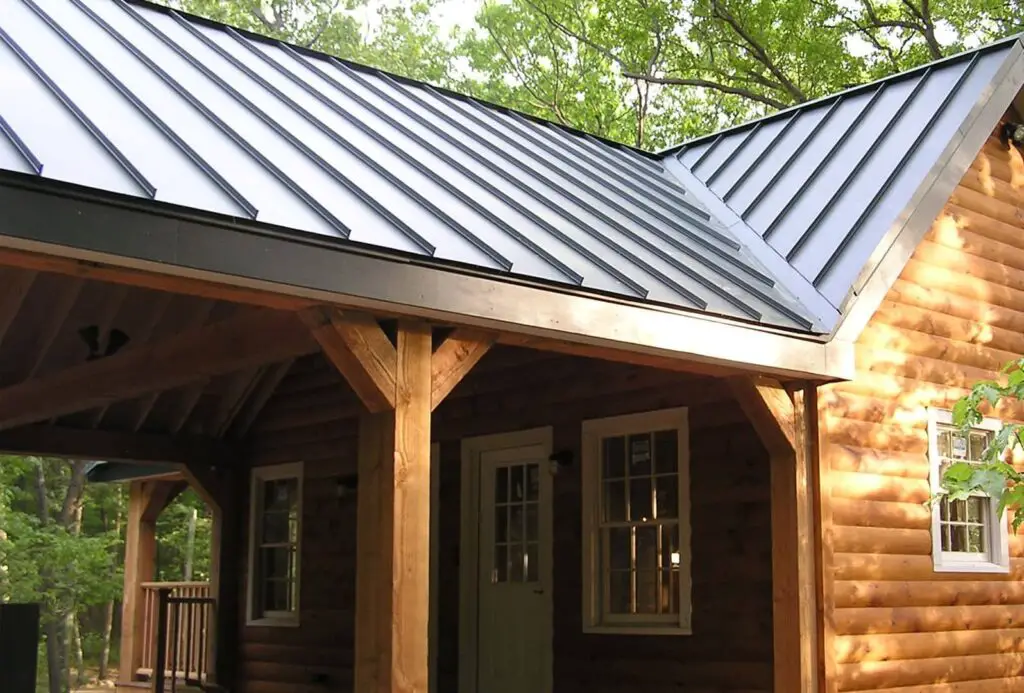
Conclusion
Oxidation is a common issue that metal roof owners often face. Over time, exposure to the elements can cause metal roofs to develop a layer of oxidation, which not only affects their appearance but also their overall performance. Fortunately, there are effective methods to remove oxidation and restore the metal roof to its former glory. By following the right instructions and using appropriate techniques, homeowners can successfully eliminate oxidation and extend the lifespan of their metal roofs.
One of the most recommended ways to remove roofing oxidation from a metal roof is by using a solution of water and vinegar. This natural and cost-effective method is gentle on the metal surface while effectively breaking down the oxidation layer. To begin, mix equal parts of water and vinegar in a spray bottle. Then, generously spray the solution onto the oxidized areas of the roof. Allow it to sit for a few minutes to penetrate the oxidation. Next, use a soft-bristle brush or a non-abrasive sponge to gently scrub the affected areas. Rinse the roof thoroughly with clean water to remove any residue. This method is not only effective but also environmentally friendly, making it a popular choice among homeowners.
These products often contain chemicals that are more potent in breaking down oxidation layers. Before using any commercial product, it is essential to carefully read and follow the manufacturer’s instructions. It is also advisable to test the product on a small, inconspicuous area of the roof to ensure compatibility and avoid any potential damage. When using commercial products, it is crucial to wear protective gear, such as gloves and goggles, to ensure personal safety.



